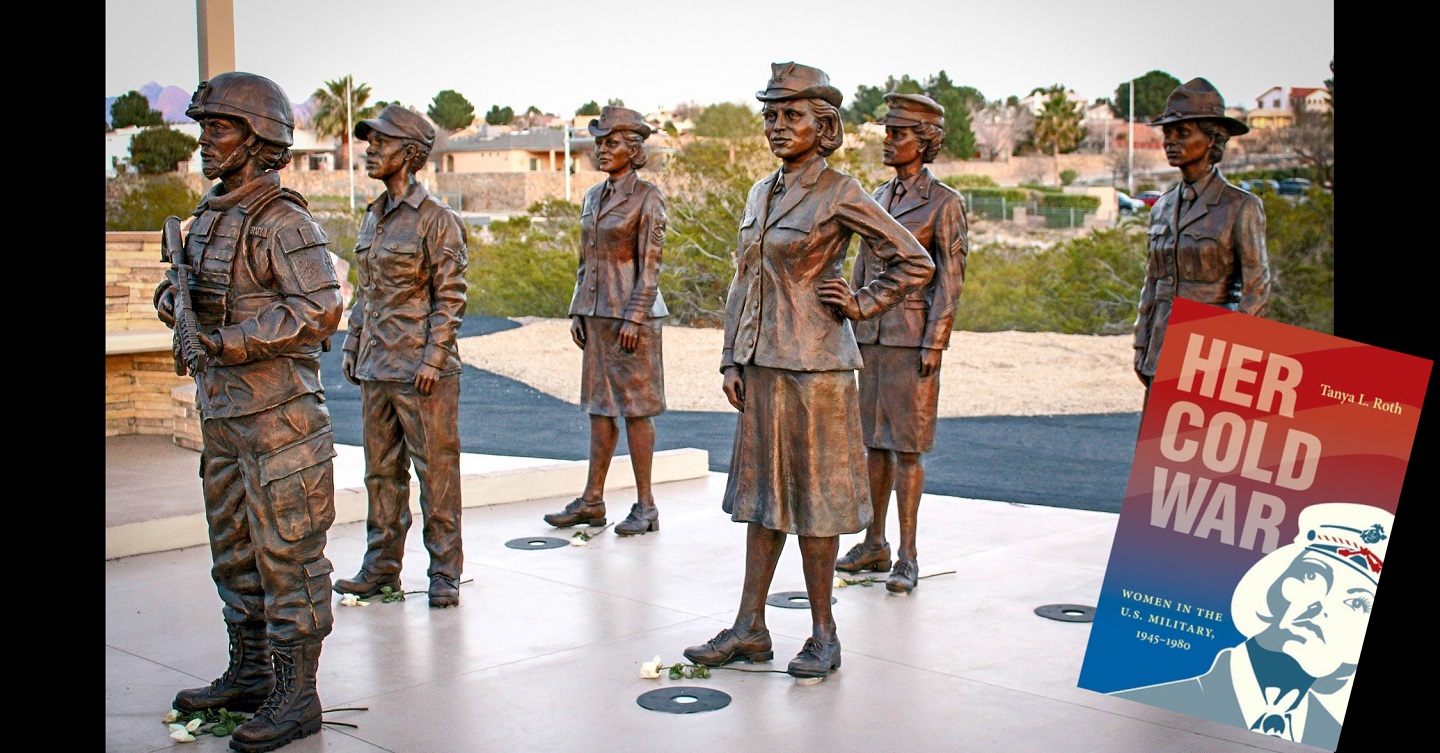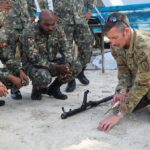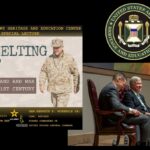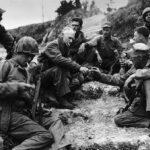
Ah yeah, let’s let women in and over the next…25ish years, more or less,…those are the years when everything that’s really done sets the groundwork for women’s roles long term.
A BETTER PEACE is happy to welcome back Tanya Roth to the virtual studio. She sits down with our Editor-in-Chief Jacqueline Whitt to discuss her new book, Her Cold War. In her book, Tanya examines how the roles and norms surrounding servicewomen in the U.S. military have morphed over the decades. She and Jackie discuss the opportunities women have gained through hard fought battles for equality in the national defense realm. From noncombatants to proven military leaders, women have come a long way since the late 1940s and there is still further to go.
Podcast: Download
Dr. Tanya Roth is a high school history teacher with emphasis on 20th Century World History and US History at Mary Institute and Saint Louis Country Day School. She previously joined us at A BETTER PEACE with the episode titled WAC MARRIAGE CASE: THINKING ABOUT GENDER, SEX, AND MILITARY SERVICE
Jacqueline E. Whitt is an Associate Professor of Strategy at the U.S. Army War College and the Editor-in-Chief of WAR ROOM.
The views expressed in this presentation are those of the speakers and do not necessarily reflect those of the U.S. Army War College, U.S. Army, or Department of Defense.
Photo Description: Women Veterans Memorial at the Veterans Memorial Park in Las Cruces, N.M.
Photo Credit: Image by Sage Scott from Pixabay





As our author, Tanya Roth, notes in the first chapter of her book (a) given the ending of the draft after World War II but (b) not the need for amazing numbers of military personnel to fulfill the requirements of occupation in places like Germany and Japan and/or to stand against the Soviets/the communists worldwide, THIS, I believe she says, is (a) the national security requirement for “manpower” (or, more correctly, for “personnel power”) that (b) would provide the basis for having significant numbers of women in the military during the Cold War.
Given, however, that, post-the Cold War, huge numbers of U.S. military personnel (and, thus, significant numbers of women in the U.S. military) continued to be the norm, this would seem to cause us to look elsewhere — for a different explanation as to these two, related, phenomenon. For example, to Christopher Layne’s “The Peace of Illusions: American Grand Strategy from 1940 to the Present.” (Therein, see Pages 30 and 31.):
“As (William Appleman) Williams put it, the goal of U.S. grand strategy has been to create an ‘Open Door world’ — and international system, or ‘world order’ — made up of states that are open and subscribe to the United State’s liberal values and institutions and that are open to U.S. economic penetration. An Open Door world rests, therefore, on two pillars: the economic Open Door (maintaining an open international economic system) and the political Open Door (spreading democracy and liberalism abroad). These pillars are linked by the PERCEPTION that ‘closure’ abroad threatens the survival of American core values — what policymakers call ‘the American way of life’ — at home. … In other words, U.S grand strategy is based on the Open Door-derived assumption that political and economic liberalism cannot flourish at home unless they are safe abroad. This deeply rooted belief was reiterated by President George W. Bush in his second inaugural address, when he declared, ‘the survival of liberty in our land increasingly depends on the success of liberty in other lands.’ … ”
(Item in parenthesis here in mine.)
Bottom Line Question — Based on the Above:
Given the post-Cold War need — for huge numbers of military personnel and, thus, for significant numbers of women in the military — should we, accordingly, give Christopher Layne’s explanation — as to these two related phenomenon — careful consideration also?
Opps. In my quote from Christopher Layne’s “Peace of Illusions … ” above, only the “William Appleman” item in parenthesis is mine.
The other two items in parenthesis above (“maintaining an open international economic system”) and (“spreading democracy and liberalism abroad”) — these are Christopher Layne’s.
Apologies.
Here, in different words from Christopher Layne, is another way of looking at why huge numbers of military personnel were required in the U.S. military (and, thus, why significant numbers of female personnel were required in the U.S. military also?) — importantly — both DURING and AFTER the Cold War:
“Thus, American grand strategy today (cir. 1998) presents a puzzle. The Soviet Union’s collapse transformed the international system dramatically, but there has been no corresponding change in U.S. grand strategy. In terms of ambitions, interests and alliances, the United States today is following the same grand strategy that it pursued from 1945 until 1991, the strategy of preponderance.”
There is a very simple answer to this grand strategy puzzle: The Soviet Union was a much less central factor in shaping U.S. policy than is commonly supposed. In fact, after the Second World War, American policymakers sought to create a U.S.-led world order based on preeminent U.S. political and military power, and on American values. That was — and remains — the essence of the strategy of preponderance.”
(Item in parenthesis above is mine.)
(See the article “Rethinking American Grand Strategy: Hegemony or Balance of Power in the Twenty-First Century?” by Christopher Layne in “World Policy Journal,” Vol 15, No. 2 [Summer 1998], page 8 [bottom of column “b”] and page 9 [top of column “a”].)